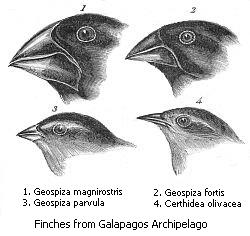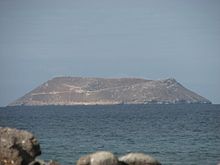 | |
| Author | Jonathan Weiner |
|---|---|
| Publication date | 1995 |
| This article needs additional citations for verification. Please help improve this article by adding citations to reliable sources. Unsourced material may be challenged and removed. Find sources: "The Beak of the Finch" – news · newspapers · books · scholar · JSTOR (March 2008) (Learn how and when to remove this message) |

The Beak of the Finch: A Story of Evolution in Our Time (ISBN 0-679-40003-6) is a 1994 nonfiction book about evolutionary biology, written by Jonathan Weiner. It won the 1995 Pulitzer Prize for General Nonfiction. In 2014, a substantially unchanged 20th-anniversary edition e-book was issued with a preface by the author.
Content
In a 1995 review of the book states "In The Beak of the Finch, Jonathan Weiner vividly describes the excitement of modern evolutionary biology through the eyes and activities of two of its most important students, Peter and Rosemary Grant. "

The finches of the title are the Galapagos or 'Darwin's Finches,' passerine songbirds in the Galapagos Islands. The species are so distinct that when Charles Darwin collected them in the islands he thought they were completely different birds, and it was only when he was back in London in 1837 that the ornithologist John Gould revealed that they were closely allied, reinforcing Darwin's growing view that “species are not immutable.” The adaptations of their numerous species, in three genera, show diverging evolution to exploit several ecological niches in the rugged and dry Galápagos Islands.
Weiner follows the careers of two biologists, Peter and Rosemary Grant, and several of their graduate students, including Dolph Schluter, Trevor Price, James (Jamie) Smith, and Peter Boag. The Grants spent more than thirty years (twenty of which are covered in the book) studying the morphology (especially bill shape), reproduction, survival, and behaviour of entire populations of Galapagos finches. Their work revolutionized scientists understanding of the pace of evolution, proving that evolution can be observed in 'real time'. Weiner describes years of painstaking field work on a desert island among the Galapagos, Daphne Major. Following years of intense drought or flooding, the Grants and their students were able to demonstrate all the necessary requirements for natural selection: traits have fitness consequences, respond to selection, and are heritable. Kim Sterelny (2007) cites this rapid natural selection as illustrating an important point about periods of relative stasis in the punctuated equilibrium hypothesis of Niles Eldredge and Stephen Jay Gould: "In claiming that species typically undergo no further evolutionary change once speciation is complete, they are not claiming that there is no change at all between one generation and the next. Lineages do change. But the change between generations does not accumulate. Instead, over time, the species wobbles about its phenotypic mean. Jonathan Weiner's The Beak of the Finch describes this very process".
While the book focuses on the Grant's and Darwin's finches, it also covers work on fruit flies by Dobzhansky (Chaper 12) and Trinidadian guppies led by John Endler (Chapter 6).
In the conclusion the author relates the speed of evolution to the growing resistance of insects to insecticides and of bacteria to penicillin and related anti-bacterial drugs.
Reception
The book is well received by biologists, and has been praised for its description of the ups and downs of fieldwork, the excitement of unexpected results, and the growing emphasis on critical statistical analysis to uncover patterns. It received some criticism for over-emphasizing the research by the Grants, e.g. Weiner's claim that they discovered species pairs of sticklebacks in freshwater lakes that were already well-known. But reviews agree that the book is compelling, well written, and an excellent primer on how evolution works.
References
- "The 1995 Pulitzer Prize Winners: General Nonfiction". pulitzer.org. Retrieved 2008-02-28.
- Enbody, Erik D.; Sprehn, C. Grace; Abzhanov, Arhat; Bi, Huijuan; Dobreva, Mariya P.; Osborne, Owen G.; Rubin, Carl-Johan; Grant, Peter R.; Grant, B. Rosemary (2021-01-19). "Transspecies beak color polymorphism in the Darwin's finch radiation". doi:10.1101/2021.01.19.426595. Retrieved 2023-11-18.
- Sterelny, K. (2007). Dawkins Vs Gould: Survival of the Fittest. Cambridge, U.K.: Icon Books. p. 96. ISBN 978-1-84046-780-2.
- ^ Orians, Gordon H (March 1995). "Book Review of "The Beak of the Finch: A Story of Evolution in Our Time."". BioScience. 45 (3): 222.
- ^ Foster, Susan A. (1995). "Review of The Beak of the Finch: A Story of Evolution in Our Time". The Quarterly Review of Biology. 70 (4): 545–546. ISSN 0033-5770. JSTOR 3035907.

